Bat boxes
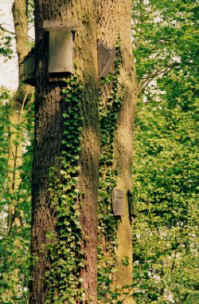 Bats have suffered a serious decline due to loss of habitat, timber
treatment and pest control. To help ensure the future of the species you could
put up some bat boxes.
Bats have suffered a serious decline due to loss of habitat, timber
treatment and pest control. To help ensure the future of the species you could
put up some bat boxes.
These pages list only a few of the numerous designs available (including
some prototypes) and concentrate on boxes most likely to be used by bats in the
summer months.
all wooden boxes should be constructed from preservative-free wood
If you are making your own then use rough-sawn wood so that the bats can get
a grip on the various surfaces. The boxes also need to be rainproof, draught
free, and the wood should be no less than 25mm thick. They can be assembled
using bat-friendly waterproof glue, screws or nails. A well-built box should
last about 10 years.
To avoid damaging your trees when fixing the boxes, you can use headless
nails or use a strap but then you will have replace the strap as the tree grows.
Only stainless steel or aluminium nails should be used to attach boxes to trees
as other types can poison the tree.
siting your bat box
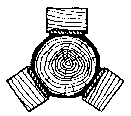
 The boxes should be sited on trees and walls as high as possible (no lower
than 2 metres) and clear of any overhanging branches so that the bats
have direct and easy access to them. Avoid putting a box on a tree trunk
where ivy is actively growing as this can quickly block the entrance.
On buildings the boxes should be placed as near to the apex as possible as
bats prefer to roost at the highest point. Ideally place the box on a wall
where the late afternoon sun will warm it, such as a west or south-west
facing wall. Only use a south facing wall if it is not in full sunlight
all afternoon, to avoid overheating the bats (this is also true for bird
boxes). Ideally you could put up several boxes facing different directions
so that if one box gets too hot or cold for them the bats can move to another.
The boxes should be sited on trees and walls as high as possible (no lower
than 2 metres) and clear of any overhanging branches so that the bats
have direct and easy access to them. Avoid putting a box on a tree trunk
where ivy is actively growing as this can quickly block the entrance.
On buildings the boxes should be placed as near to the apex as possible as
bats prefer to roost at the highest point. Ideally place the box on a wall
where the late afternoon sun will warm it, such as a west or south-west
facing wall. Only use a south facing wall if it is not in full sunlight
all afternoon, to avoid overheating the bats (this is also true for bird
boxes). Ideally you could put up several boxes facing different directions
so that if one box gets too hot or cold for them the bats can move to another.
signs of use
Look for bat droppings or slight staining immediately below the exit hole or
on the landing plate. The droppings look similar to mouse droppings but are dry
and crumble to dust. The best way of assessing whether bats have moved in is to
watch your boxes at dusk to see any bats leaving to feed and by looking for
droppings or urine stains at the entrance.
Bats may use several different roost sites throughout the year and your
boxes could only end up being used for a short time, if at all. However, bats
are 'ancestral' in their use of roost sites and should return for roughly the
same period in following years once they have chosen a site. Of course, the more
bat-friendly your local area and garden is the more bats you are likely to
attract to your boxes. To see how you can improve your environment see gardening.
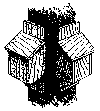 Once
or twice a year, if it is practicable, give the slotted opening a brush
to remove any build up of dust, dirt or cobwebs that could block the opening.
Also prune back any plants or tree branches that may have grown across.
The best time to do this work is when the bats have left for their winter
hibernation, which is from about late autumn to early spring. In particular
avoid the period between June to mid-August when female bats are normally
giving birth and lactating.
Once
or twice a year, if it is practicable, give the slotted opening a brush
to remove any build up of dust, dirt or cobwebs that could block the opening.
Also prune back any plants or tree branches that may have grown across.
The best time to do this work is when the bats have left for their winter
hibernation, which is from about late autumn to early spring. In particular
avoid the period between June to mid-August when female bats are normally
giving birth and lactating.
The pictures below show a design which is proving very successful in attracting both
Pipistrelles and
larger bats including Barbastelles.
It is quite large and has a number of vertical baffles to mimic tree trunk or branch
splits.
PLEASE NOTE that these pictures show a box that can be opened for inspection but it
is illegal to open a bat box if it is being used, unless you hold the appropriate
licence from Natural England.
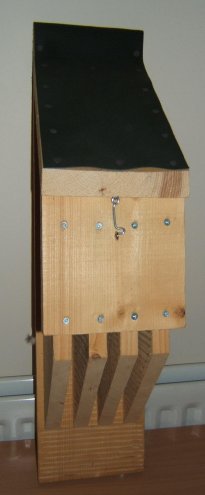
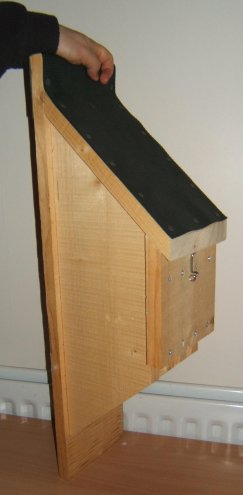
And here's some views of the inside showing the baffle arrangement.
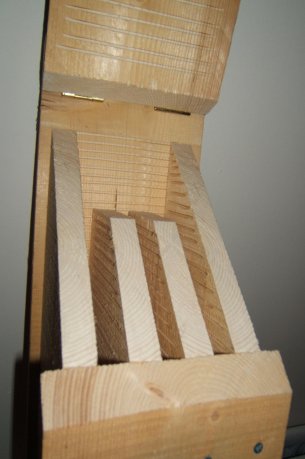
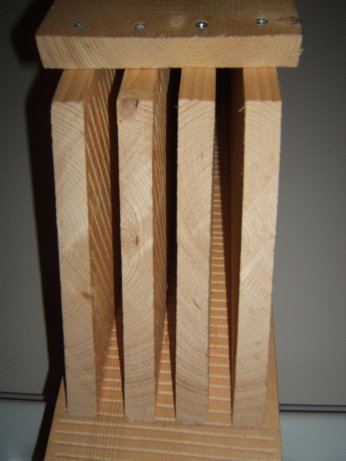
The plans to build the original, non-opening version of this bat box can be downloaded
from the Vincent Wildlife Trust.
There are numerous designs for bat box 'kits' and on this page you'll find just a couple......
the 'finnemore' bat box
This bat box was designed by Mick Finnemore, one of the founder members
of Warwickshire Bat Group. From our experience it is a very successful
design, especially liked by Pipistrelles
probably due to its slim internal dimensions. Because it has such a narrow
internal space it avoids the problem of birds trying to nest inside it.
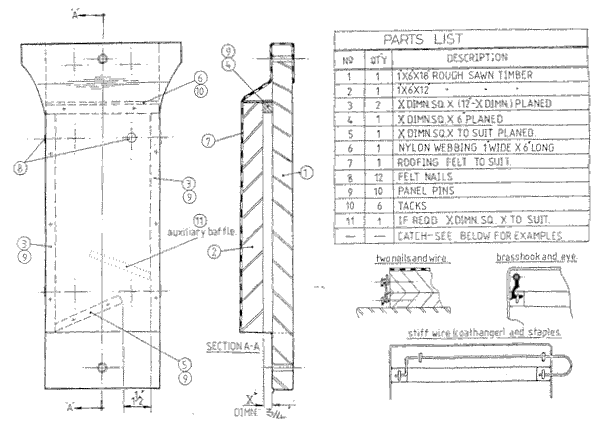
Download a pdf of this bat box design.
the pete maule 'wedge'
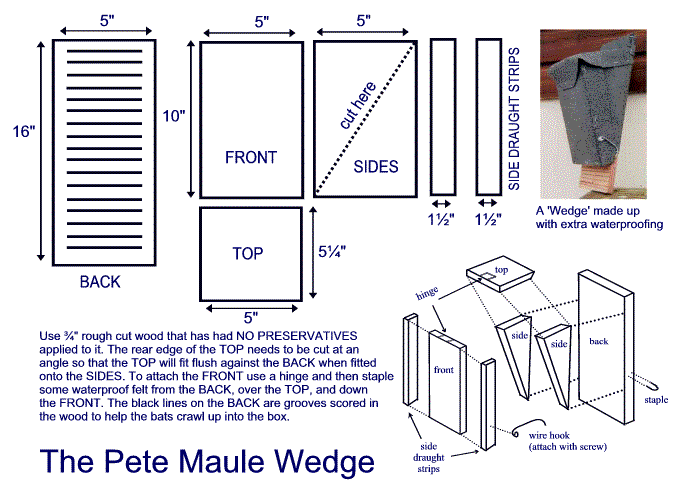
Download a pdf of this bat box design.
Bats and their roosts are protected by law
meaning that as soon as any box is being used by bats,
whether they are there or not, it is protected and both the bats and the box need to be left undisturbed. So
unless you have an appropriate licence from Natural England you should
not inspect bat boxes where bats are known to be roosting.
further reading
"An analysis of the usage of bat boxes in England, Wales and Ireland"
by the Vincent Wildlife Trust (pdf,
1.4Mb) May 2006.